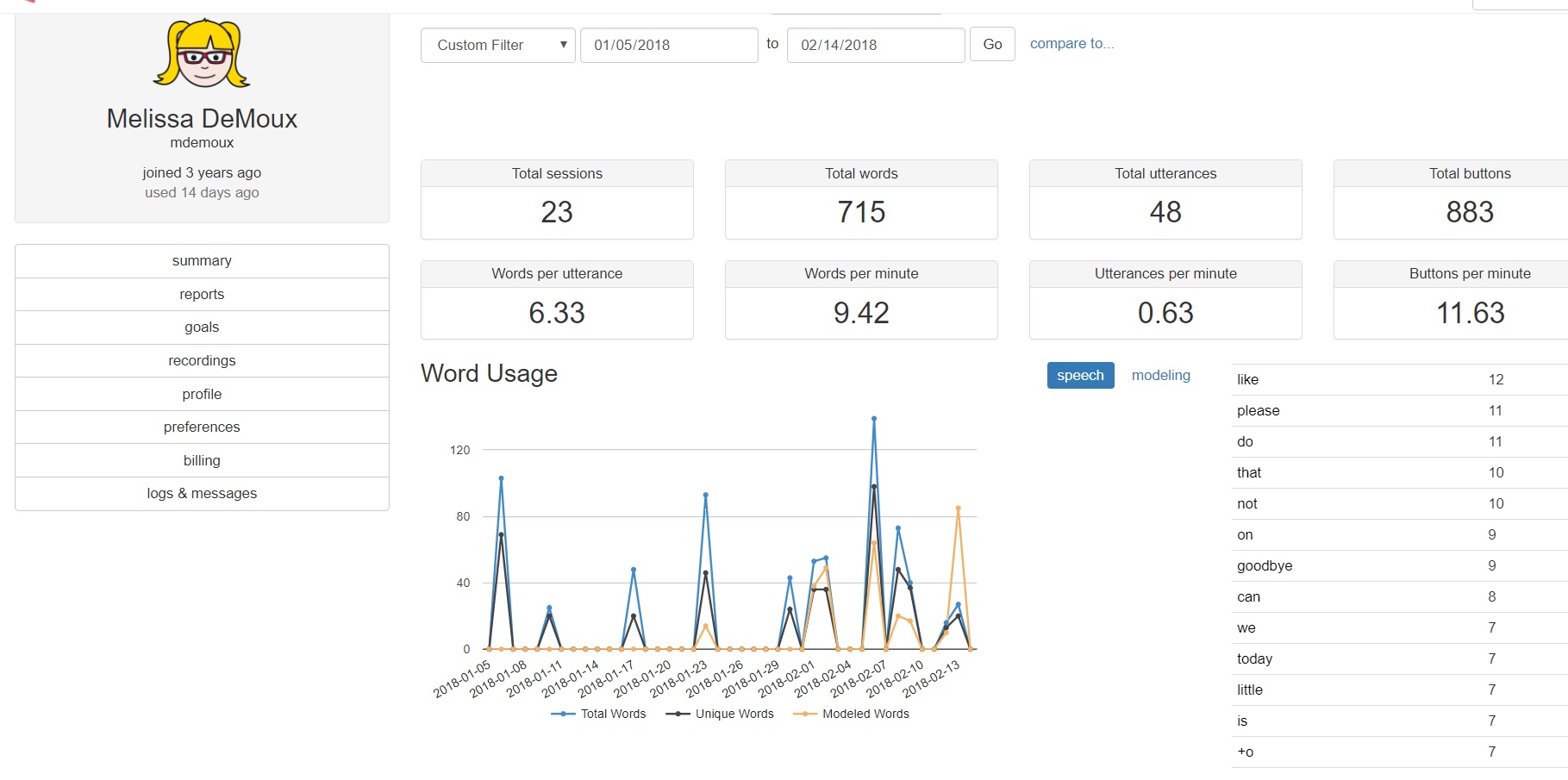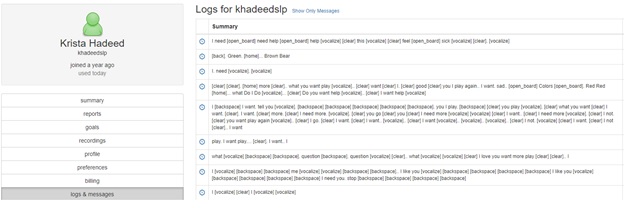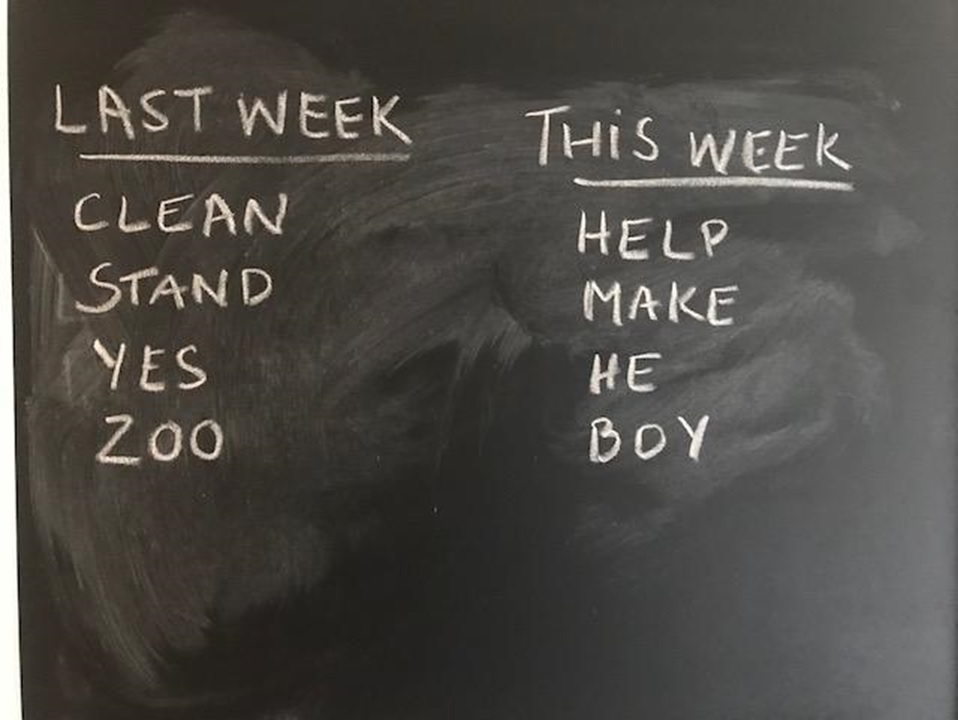Guest Post: Modeling AAC in the Home
We love to share insights from AAC professionals who work regularly with students and what greater topic to tackle than modeling.
The Independent Living Centre WA teaches, "We can best support students using augmentative and alternative communication by creating a learning environment where they are immersed in the use of their communication system." That's what modeling is all about.
Take a peek at what Krista Hadeed, an experienced AAC professional, has to share about this important topic. While Krista does use CoughDrop with communicators, these universal principles apply to AAC on any system.
Modeling AAC in the Home
The key to supporting AAC users lies in the hands of the stakeholders: parents, peers, speech-language pathologists, occupational therapists, teachers, support staff, and the like. We know that evidence-based implementation strategies, such as Aided Language Input, are crucial in increasing skills, building user motivation, forming bonds with communication partners, and improving operational competence.
Oftentimes, stakeholders may feel intimidated and overwhelmed when they are first introduced to AAC, new systems, and new apps. The most common worry amongst the AAC team is the fear of “messing up” or “doing it wrong”, and “hindering” the user’s progress. Other barriers to consistent modeling include lack of support, busy schedules, and lack of communication amongst team members.
Take a moment to think back to your early childhood years. The years when you were shuffled back and forth to soccer practice or had piano lessons at home.
I remember taking guitar lessons for an hour each week throughout elementary school. While I worked diligently each week to learn chords and transition my fingers seamlessly from one chord to another, this knowledge never carried over. Here I am, many years later, with the ability to play ONE song. Why? I never touched a guitar outside of those hour-long lessons.
This is what happens to our AAC users who use their devices during their speech therapy sessions and nowhere else.
How can we empower each stakeholder and encourage them to model AAC to support our users?
Here are a few ideas for the AAC team:
Set small, feasible goals with a reasonable timeline
We’ve found that setting smaller, concrete goals for the stakeholders makes a measurable difference in the frequency and quality of AAC modeling. These goals can vary depending on the needs of the AAC learner, the level of stakeholder’s comfort with the communication device, and general team goals. Some examples of team goals are:
- Modeling throughout 1 activity per day
- Modeling 3-4 predetermined “core words of the week” throughout an activity/day/week
- Modeling 1 word per utterance
- Encourage the user to have his or her device out and ready to use
If the goals are simple, the team members are more likely to implement them. CoughDrop allows stakeholders to set their own goals or select them from a goal bank. This way, everyone is on the same page with their modeling targets.
Take data
The best way to measure progress is by collecting data. We are always doing this with the user by tracking their performance on specific tasks and objectives. It’s time to turn the tables and track how WE (the stakeholders) are modeling. Keeping tabs on our own modeling really holds us accountable and allows us to celebrate our little wins when we make progress! Family members can quickly tally how many times they were able to model a single word throughout a given activity using a pen and paper.
CoughDrop does a fantastic job of helping us keep track of both user AND modeling data separately. Oftentimes, when apps and devices are logging data, there is no differentiation between the user and the stakeholder’s input, therefore data can be skewed. CoughDrop also puts it into an easily-readable chart (for all of us visual folks).

Ensure access
Make sure that all team members have access to the user’s pagesets, whether it is on their own separate device or some form of no-tech board. Consistency is important for building motor plans.
CoughDrop has eliminated access barriers by allowing the app to be accessed across platforms. If the child has an iPad, but mom has a Samsung tablet, and the child’s teacher has a Kindle…they’re all able to access the app! CoughDrop accounts are also accessible via web platform, which makes editing and syncing pages a breeze for everyone!
Connect stakeholders with other AAC teams
AAC is a journey, and while it is rewarding, it is better traveled with others. There are some families who can book their tickets and pack their suitcases without lists or itineraries because they’re familiar with the destination. Others need to consult with a travel agent, hunt down the right clothes for the weather, and learn the language. Everyone is in different stages of preparation for the same journey: independent communication by the AAC user.
What better way to forge through than by speaking with someone who has already been through that part of the adventure? Families and teachers have found so much support by connecting with others.
Create frequent opportunities for team communication
Nowadays, we have so many venues for communication that staying in touch is easy! It’s always a task to get several people coordinated with their busy schedules. Even if team members touch base at least a couple times per month, it will make a difference. This holds stakeholders accountable and helps everyone feel supported in the journey!
In-app "logs and messaging" features like the ones available in CoughDrop provide a wonderful way to keep team members connected. Logs of the user’s speech productions are displayed so that everyone on the team can see the user’s productions throughout the day.

Set visual reminders
Set “pop up” reminder on your phone or post a simple list of core words in the child’s room. These visuals prompt us to think, “Oh right! It’s dinner time, I’ll grab XXX’s device and model while we sit and eat as a family,” or “We have 3 new core words this week, how can I use them?”.
When core words of the week are posted in a frequently-viewed place in the home or classroom, it encourages not only the students to practice them, but it reminds stakeholders to model them as much as they can.

Go easy on yourself
Getting “good” at modeling takes time! Even for seasoned clinicians, it takes time to get acquainted with new devices and pagesets before becoming more fluid with their motor plan. Modeling will be messy at first (and maybe for a long while)! Reward the successes of all team members no matter how small.
We are all investing in the communication skills of our kiddos to promote a better quality of life, a sense of self, and a voice!
…and always remember: “Doing something, even if it isn’t perfect, is infinitely better than doing nothing at all…” (Robin Parker, praacticalaac.org).

About the Guest Blogger: Krista Hadeed, MS, CCC-SLP, has been working with children with special needs for over 7 years. She currently services children with a variety of communication needs and is growing in her knowledge and application of evidence-based practices for AAC users. She also owns a private practice dedicated to providing personalized therapy and resources for children, families, and support staff. You can find her on Instagram (@kmhspeech) and read her blog (www.kmhspeech.com/blog).
